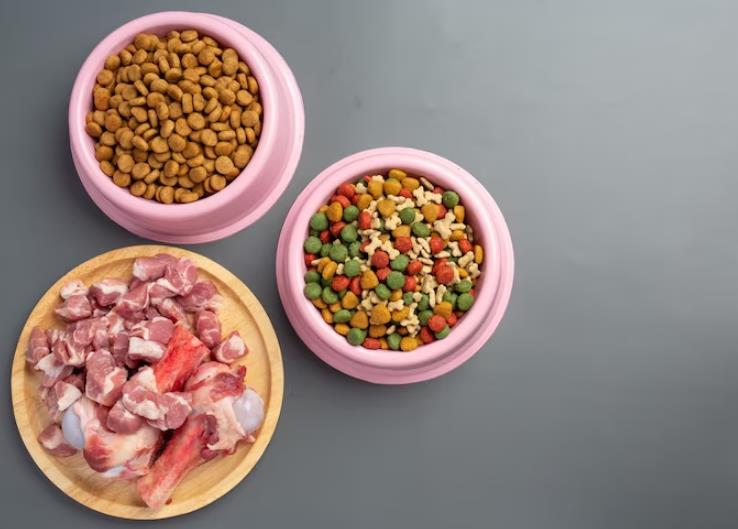Catapulting into the world of pet food, you may find yourself surrounded by a plethora of options to fill your furry friend’s bowl. From the convenience of dry kibble to the palatability of wet food, the choices can be overwhelming. Have you ever considered the benefits of freeze-dried or raw pet food, or perhaps ventured into homemade meals for your beloved companion? Let’s examine into the various types of pet food available, including veterinary prescription diets tailored to cater to specific health needs. Discover what truly nourishes your pet and make informed decisions to keep their bowl brimming with the best.
Key Takeaways:
- Dry Pet Food: Most popular type of pet food, convenient, cost-effective, made from grains, proteins, vitamins, and minerals.
- Wet Pet Food: Canned or packed in pouches, softer texture, easier to digest, more palatable for cats and dogs.
- Freeze-Dried Pet Food: Highly nutritious, made by freezing raw ingredients, removes moisture and contaminants, can be stored for longer periods.
- Raw Pet Food: Made from fresh raw ingredients, high in nutrients, may pose risks like bacterial contamination.
- Homemade Pet Food: Made from ingredients in the home, good option for a balanced diet, research pet nutrition before preparing.
- Veterinary Prescription Diets: Specifically designed for pets with health conditions, formulated for allergies, digestive issues, kidney or liver disease, more expensive but beneficial for pets with specific needs.

Types of Pet Food
Dry Pet Food
Dry pet food is the most popular type of pet food available, consisting of a mixture of grains, proteins, vitamins, and minerals. It is convenient, cost-effective, and has a long shelf life.
Wet Pet Food
Wet pet food is packed in pouches or cans and cooked in broth. It has a softer texture, is palatable for pets, and aids digestion. Knowing – Wet pet food is an excellent option for cats and dogs who prefer softer textures or have difficulty chewing dry kibble.
Freeze-Dried Pet Food
Freeze-dried pet food is a nutritious option made by removing moisture from raw ingredients through freezing and vacuum drying. This process preserves the food’s nutrients and increases its longevity.
Raw Pet Food
Raw pet food is made from fresh ingredients like raw meat and vegetables, offering high nutritional value for pets. However, it can pose risks like bacterial contamination. It is necessary to research before feeding raw pet food to your furry friends to ensure a balanced diet and safety.
Homemade Pet Food
Homemade pet food is a nutritious solution made from safe ingredients found at home. While homemade pet food offers customization and quality control, it’s important to understand pet nutrition and ingredients to avoid potential health risks.
Veterinary Prescription Diets
Veterinary prescription diets cater to pets with specific health conditions such as allergies or kidney disease. While these diets may be more expensive, they can provide necessary nutrients to manage your pet’s health effectively.
FAQ
Q: What is dry pet food made of?
A: Dry pet food is typically made from a combination of grains, proteins, vitamins, and minerals that are ground into a powder and then baked into kibble or pellets.
Q: How is wet pet food different from dry pet food?
A: Wet pet food is canned or packed in pouches, cooked in a broth, and has a softer texture than dry pet food. It is also more palatable for pets and easier to digest.
Q: What is the process of making freeze-dried pet food?
A: Freeze-dried pet food is made by freezing raw ingredients and removing moisture using a vacuum, preserving the nutrients and eliminating bacteria and contaminants.
Q: What are the benefits and risks of feeding pets raw pet food?
A: Raw pet food is highly nutritious and beneficial for pets with certain health issues, but it also carries risks such as bacterial contamination.
Q: What are veterinary prescription diets and who are they for?
A: Veterinary prescription diets are specially formulated pet foods for pets with specific health conditions like allergies, digestive issues, kidney or liver disease. They are more expensive but beneficial for pets with health issues.
